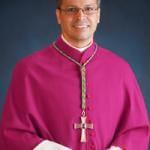A reader writes:
I just noticed it has been almost 20 years since you wrote By What Authority? based on the copyright notice near the front of the book. I just discovered it recently and find it quite an eye opener! In fact I am getting much more out of it the second time through. Often it is necessary to read a paragraph a couple times to understand, but one phrase is escaping me.
In numerous locations you refer to the bible’s “Table of Contents.” Of course I know what a Table of Contents is; you have one on page 6 of this edition (gold cover with black print, Our Sunday Visitor, Inc. if that helps). Here’s one example beginning Chapter Six: “I wondered. Especially since the living fossil of the Tradition of the Table of Contents still inexplicably swam like a coelacanth in the ocean of Evangelical faith precisely where we said tradition had gone extinct.” I look up words like paradosis to learn the meaning and follow the scripture references for my own edification but the Table of Contents references are keeping me up at night. I wonder if you might please help clarify this? Are you saying a ToC itself is a tradition? But it’s human tradition not apostolic tradition. So even Evangelicals follow some traditions, right?
Great book. I picked up This Is My Body as well.
Hello! Thanks for reading! I am saying that this Table of Contents is not merely a tradition or a human tradition, but is indeed apostolic tradition. That is, the Church’s knowledge of what does and does not constitute the corpus of Sacred Scripture (the written aspect of apostolic tradition) comes to us from the apostles and is judged by the Magisterium of the Church.
That said, it’s quite true Evangelicals observe Tradition, both apostolic and human. That’s what chapter six is all about–and ultimately, the whole book. My point is that since Evangelicals already accept Sacred Tradition in part (jumbled with human traditions that have been elevated to sacred tradition–and mutilated by rejection of some aspects of Sacred Tradition). My argument is that, once it is seen that Sacred Tradition is a sound idea, the reader should take a look at the rest of Sacred Tradition as it is preserved in the Catholic Church.











